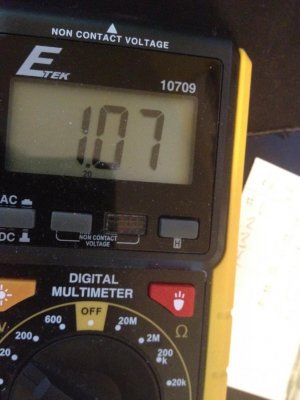So I've been working on a DIY controller the last few days and figured I'd show some of the results. Below is a shot of the LCD feedback with some functionality displayed. (Sorry, all pics taken with my iPhone)

I started buying everything to make this when my Apex started messing up and I realized how much it costs to replace everything. This controller will be wireless capable, with an LCD readout, full independent outlet control switched by whatever variables I choose, temp and ph monitoring, separate LED channel dimming and a bunch more.
Incorporated into this controller at this point
16x4 LCD display
8 Mechanical Relay board
Arduino UNO
9 volt power source for dimming of LED driver Meanwell ELN-60-48P
Sitting in bin to be worked in
Water proof temp sensor
Real time clock
Wireless adapter
Ethernet Adapter
Float sensor
Below is a shot of some stuff wired up

I have a single relay wired in right now, which is set to on position as natural state. You can see the red light lit up by the relay closest to the breadboard, indicating it is switched close. The relay is currently switched by the button attached to the small red breadboard. The button is representative of any control variable I desire to switch the relay. Below is some shots of it in action.
Button depressed the outlet is ON, indicated by LCD feedback along with the redlight lit up in front of the respective relay. See image below

When I press the button, the relay is digitally switched off. Notice the outlet description on the LCD, along with red light no longer lit in front of the relay. The pressing of the button is representative of whatever control variable I choose, such as time, temp, water level, etc. See image below...

I started buying everything to make this when my Apex started messing up and I realized how much it costs to replace everything. This controller will be wireless capable, with an LCD readout, full independent outlet control switched by whatever variables I choose, temp and ph monitoring, separate LED channel dimming and a bunch more.
Incorporated into this controller at this point
16x4 LCD display
8 Mechanical Relay board
Arduino UNO
9 volt power source for dimming of LED driver Meanwell ELN-60-48P
Sitting in bin to be worked in
Water proof temp sensor
Real time clock
Wireless adapter
Ethernet Adapter
Float sensor
Below is a shot of some stuff wired up
I have a single relay wired in right now, which is set to on position as natural state. You can see the red light lit up by the relay closest to the breadboard, indicating it is switched close. The relay is currently switched by the button attached to the small red breadboard. The button is representative of any control variable I desire to switch the relay. Below is some shots of it in action.
Button depressed the outlet is ON, indicated by LCD feedback along with the redlight lit up in front of the respective relay. See image below
When I press the button, the relay is digitally switched off. Notice the outlet description on the LCD, along with red light no longer lit in front of the relay. The pressing of the button is representative of whatever control variable I choose, such as time, temp, water level, etc. See image below...


















